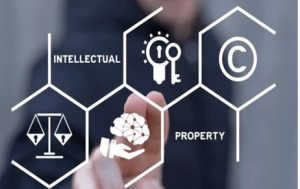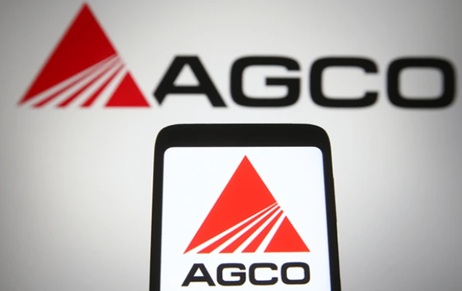Biotechnology is one of the High-Tech industry with innovation and progress in the field of…
Intellectual Property Rights: Securing Creativity and Advancing Innovation
Today’s global economic growth depends fully on companies that think and create original solutions. We must defend products transforming healthcare or technology and artistic works inspiring audiences. Intellectual property rights play an essential role in this setting. Through exclusive rights, IPR helps creators and inventors develop new products while allowing them to keep the rewards that their work brings.
When humans produce intellectual content, they gain the right to protect their inventions and other creations. During a limited timeframe, creators receive legal control over their work to motivate them to produce fresh ideas. Additionally, it has been proved beyond dispute that the innovation’s intellectual labor should be accorded the weight it deserves in order for the public benefit to result.
There are several categories of IPR, each serving a unique purpose:
- Patents: The legal protection system helps preserve inventions when they demonstrate novelty and operability plus require time to understand. Patents can protect both the things you produce, the processes you follow, and the technologies you use.
- Copyrights: Creators receive exclusive rights to control their artistic literature digital material through the protective power of copyrights.
- Trademarks: Marking symbols and names with trademarks helps businesses separate their products and services to create stronger brand memories.
- Industrial Designs: Examine how product design elements like form, pattern, and colour will look to customers.
- Geographical Indications: Identify the location where products come from and show how these goods display specific traits of that specific area.
Exclusive rights encourage people to generate new ideas and grow economies which build the foundation for business competition.
Understanding of Intellectual Property Rights Developed over Time and Became a Worldwide Significant
In the 14th century, Europe started protecting intellectual property rights, with Venice setting up the first modern system. During its evolution, IPR added trademarks, copyrights, and industrial designs to its coverage besides patents. Our modern world depends heavily on IPR because of increased global business connections.
TRIPS agreement from the World Trade Organization sets identical rules about intellectual property rights regulations across its member countries. Through the Patent Cooperation Treaty (PCT), inventors can save effort by filing their patent applications worldwide at once instead of filing separately for each country. The worldwide rules ensure that intellectual property is protected no matter which country it is in so businesses can trade globally and grow new ideas.
 The Role of IPR in the Pharmaceutical Industry
The Role of IPR in the Pharmaceutical Industry
No industry before pharmaceuticals shows as strongly how intellectual property rights boost success and innovation. Creating new medication requires substantial risks plus substantial financial investments that run between $300 million and $1 billion. The company needs 8 to 10 years to complete drug development testing and receive government permits before starting production. Scientific information, not industrial know-how, drives competition in the global pharmaceutical sector, and a company’s success will be mainly based on its research and development activities.
Pharmaceutical companies depend on patents to protect their rights in this sector. During their exclusive period, companies earn profits to pay back research investments and generate funds for future developments. When competitors create cheaper copies of this drug, they fundamentally restrict the revenue returns of the drug’s original developer.
In addition to strengths, the pharmaceutical sector deals with one-of-a-kind problems. Regulatory processing times shrink how long patent protections maintain their strength. When patents for drugs expire, generic manufacturers enter the market to take away revenue from the original developer. To manage these problems, pharmaceutical companies use partnerships and sell their intellectual property rights while also contracting external research services. These business methods lower expenses, allowing companies to connect with international markets and professional specialists.
Beyond Pharmaceuticals: Other Applications of IPR
The effect of intellectual property rights extends throughout all business sectors, with pharmaceuticals serving as the primary model. When it comes to traditional medicine, IPR helps original communities get credit and financial gains for their medical insights. As seen with Darjeeling tea and Swiss watches, location-based product identification systems show why regional specialties need specialized protection. When it comes to technology, companies, and copyrights, defend their digital creations by stopping unauthorized copying and sharing. Advanced technology systems in artificial intelligence and machine learning push both data security and algorithmic improvement into the IPR sphere. The field of biotechnology depends heavily on the protection of intellectual property rights (IPR). Developing new medical solutions relies on strong protection methods to support ongoing research funding and success.
Challenges and the Path Ahead
Despite being vital to society, the IPR system faces critical problems. Some people see IPR as protecting big organizations rather than supporting innovative smaller parties or average consumers. People argue about fair access to medicine when companies keep extending outdated product patents through small changes. Setting up and keeping up intellectual property protection needs a lot of money that little businesses and creative solo performers may find hard to manage. Our present challenge centers on creating an IP system that sufficiently safeguards businesses while enabling newcomers to enter the market. In both industrialised and developing nations, traditional medicine that uses natural botanical products significantly improves the worth of human health businesses.
Conclusion
New economy success depends on strong intellectual property protection. When creators receive protection for their work, they develop new technology, medical breakthroughs, artistic achievements, and more. As the global economy develops, our IP protection system needs to adapt to solve new problems while keeping products affordable for everyone. An equilibrium between intellectual property rights helps both creativity thrive and economic development while bringing better life quality.
Author: Gauri Malviya, in case of any queries please contact/write back to us via email to chhavi@khuranaandkhurana.com or at IIPRD.

 The Role of IPR in the Pharmaceutical Industry
The Role of IPR in the Pharmaceutical Industry

